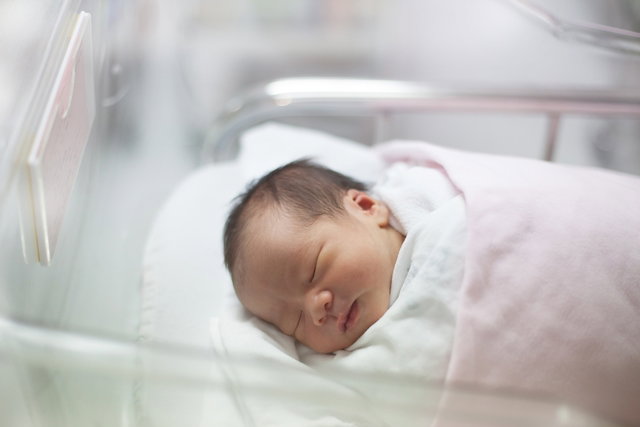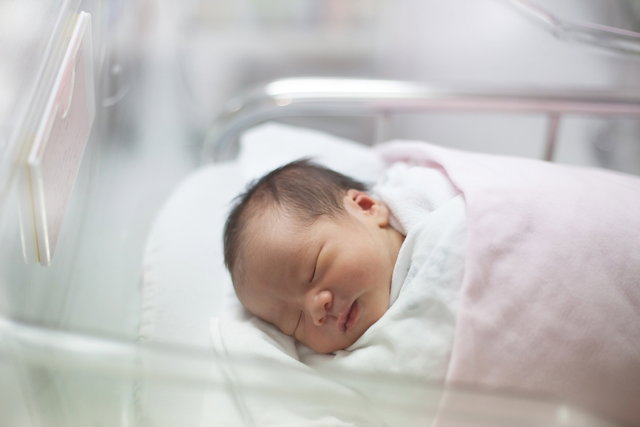Transient tachypnea of the newborn is a situation in which the baby has difficulty breathing shortly after birth, which can be noticed by the bluer color of the skin or the baby’s faster breathing.
It is important that this situation is identified and treated as quickly as possible to prevent complications. Improvement in the symptoms of transient tachypnea in newborns may appear between 12 and 24 hours after starting treatment, but, in some cases, it may be necessary to maintain oxygen for up to 2 days.
After treatment, the newborn does not suffer any type of sequelae, nor does it present a greater risk of developing respiratory problems such as asthma or bronchitis.

Main symptoms
The symptoms of transient tachypnea in the baby are identified shortly after birth and may include:
- Rapid breathing with more than 60 respiratory movements per minute;
- Difficulty breathing, making sounds (groaning);
- Exaggerated opening of the nostrils;
- Bluish skin, especially in the nostrils, lips and hands.
When the baby presents these symptoms, it is recommended to undergo diagnostic tests, such as chest X-rays and blood tests, to confirm the diagnosis and initiate appropriate treatment.
How the treatment is carried out
Treatment for tachypnea in newborns is usually done with just oxygen reinforcement to help the baby breathe better, as the problem resolves on its own. Therefore, the baby may need to wear an oxygen mask for 2 days or until oxygen levels return to normal.
Furthermore, when transient tachypnea causes very rapid breathing, with more than 80 respiratory movements per minute, the baby should not be fed by mouth, as there is a great risk of milk being aspirated into the lungs, causing pneumonia. In these cases, the baby may have to use a nasogastric tube, which is a small tube that goes from the nose to the stomach and which, normally, should only be used by the nurse to feed the baby.
Respiratory physiotherapy can be indicated during treatment to, together with oxygen, facilitate the baby’s breathing process, and is normally carried out by a physiotherapist who uses some types of positions and exercises that help reduce the effort of the respiratory muscles and facilitate opening the airways.
Why does it happen
Transient tachypnea in newborns appears when the baby’s lungs are unable to eliminate all the amniotic fluid after birth and, therefore, there is a greater risk of developing the problem in cases of:
- Newborn with less than 38 weeks of gestation;
- Newborn with low birth weight;
- Mother with a history of diabetes;
- Delivery by cesarean section;
- Delay in cutting the umbilical cord.
Therefore, one way to prevent the development of transient tachypnea in newborns is to inject corticosteroid medication directly into the mother’s vein, 2 days before cesarean birth, especially when it occurs between 37 and 39 weeks of pregnancy.
Furthermore, maintaining a healthy pregnancy with a balanced diet, regular exercise and reducing the use of substances such as alcohol and coffee helps to reduce the number of risk factors.

Sign up for our newsletter and stay up to date with exclusive news
that can transform your routine!
Warning: Undefined array key "title" in /home/storelat/public_html/wp-content/plugins/link-whisper-premium/templates/frontend/related-posts.php on line 12
Warning: Undefined array key "title_tag" in /home/storelat/public_html/wp-content/plugins/link-whisper-premium/templates/frontend/related-posts.php on line 13




